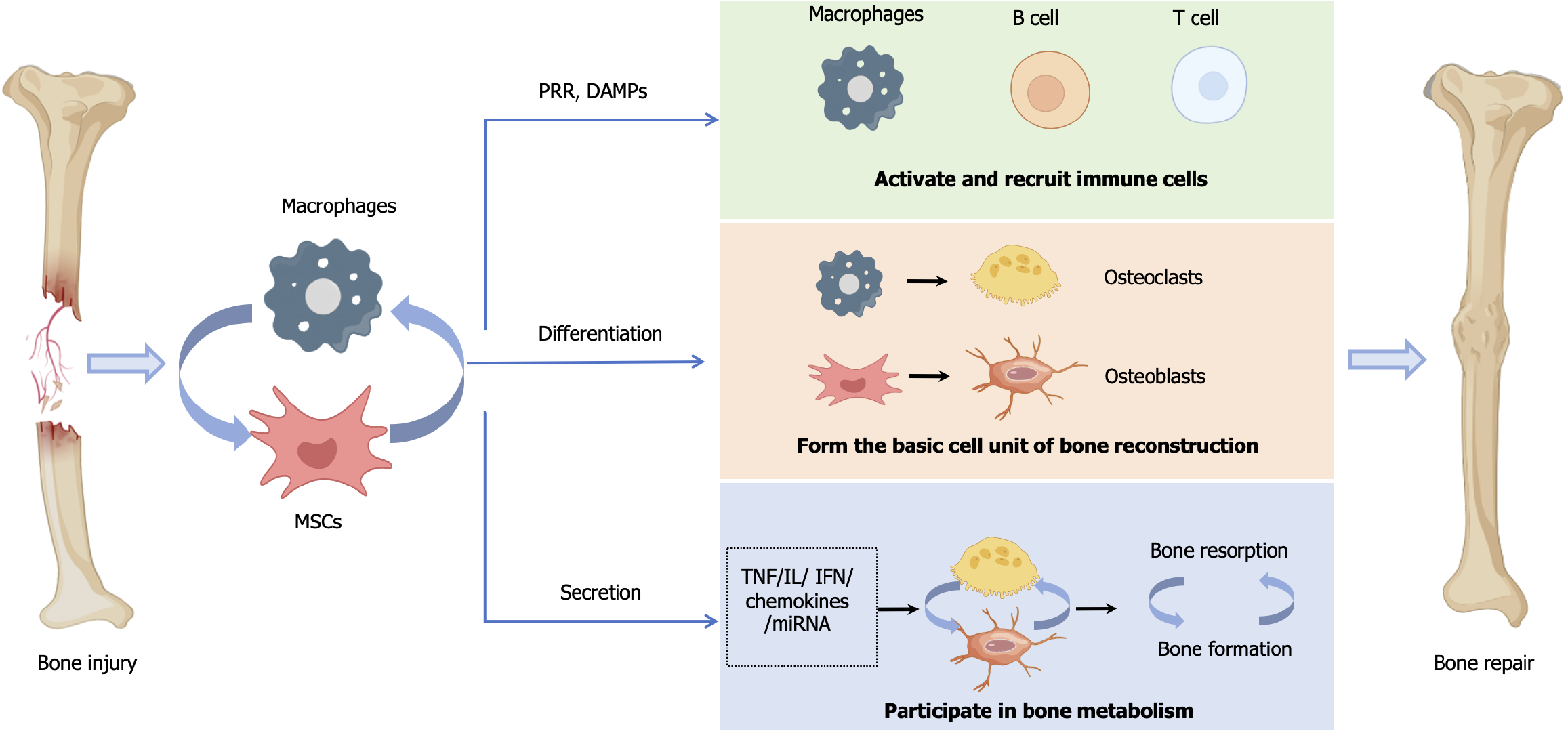Copyright
©The Author(s) 2024.
World J Stem Cells. Apr 26, 2024; 16(4): 375-388
Published online Apr 26, 2024. doi: 10.4252/wjsc.v16.i4.375
Published online Apr 26, 2024. doi: 10.4252/wjsc.v16.i4.375
Figure 3 Mesenchymal stem cells and macrophages promote bone tissue repair.
The inflammatory microenvironment after injury promotes the activation of mesenchymal stem cells (MSCs) and macrophages. Through immune response patterns such as pattern recognition receptors and damage associated molecular patterns, the interaction between MSCs and macrophages further activates immune cells such as B cells and T cells, enhancing the immune response in the damaged microenvironment. MSCs and macrophages are precursor cells for osteoblasts (OBs) and osteoclasts (OCs), respectively, and play an important role in bone tissue reconstruction. At the same time, MSCs and macrophages also affect the formation of OBs and OCs by secreting chemokines, tumor necrosis factor, interferon, interferon and other bioactive factors, regulating the balance between bone resorption and bone formation, and promoting the repair of bone tissue. MSC: Mesenchymal stem cell; PRR: Pattern recognition receptor; DAMPs: Damage associated molecular patterns; TNF: Tumor necrosis factor; IL: Interleukin; IFN: Interferon; miRNA: MicroRNA.
- Citation: Zhang FF, Hao Y, Zhang KX, Yang JJ, Zhao ZQ, Liu HJ, Li JT. Interplay between mesenchymal stem cells and macrophages: Promoting bone tissue repair. World J Stem Cells 2024; 16(4): 375-388
- URL: https://www.wjgnet.com/1948-0210/full/v16/i4/375.htm
- DOI: https://dx.doi.org/10.4252/wjsc.v16.i4.375









